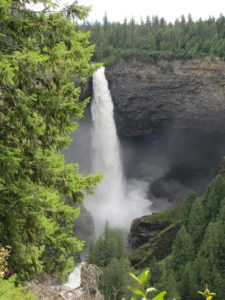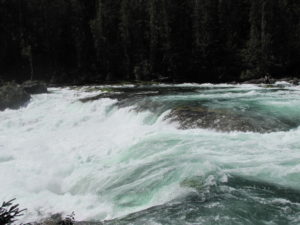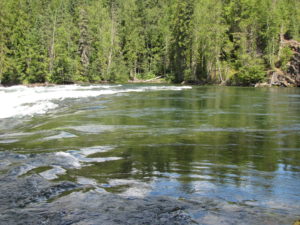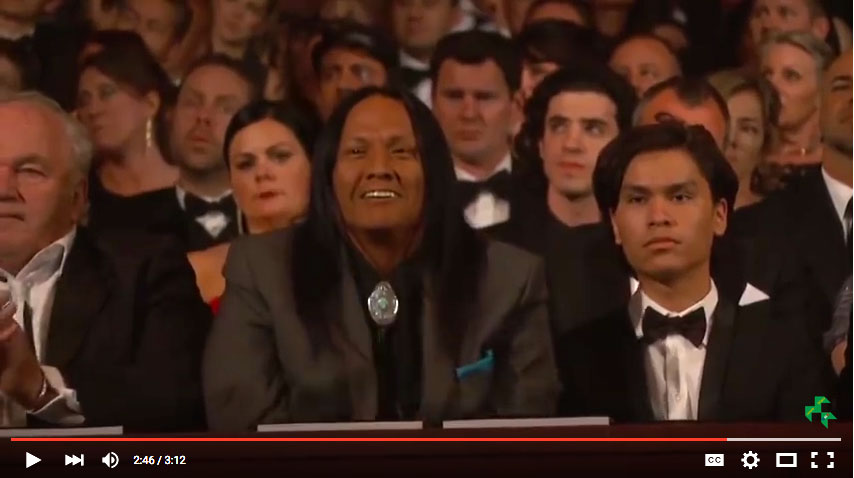This is a collaborative blog written by ICE members. The views represented here are diverse, and entirely those of the authors who share them. We hope you enjoy these Seeds for Thought!

Over the last year and a half I have had the pleasure of corresponding with writer, photographer and nature-lover David Malinsky. David has a particular love for Great Basin Bristlecone Pines, which he calls “Old Friend in High Places”.
Here is a single sequence from one of his communications… a glimpse into the beauty David experiences in his exploration of these majestic tree-beings. If you are interested in joining the conversation and sharing your feedback and responses, contact David to join his listserve.
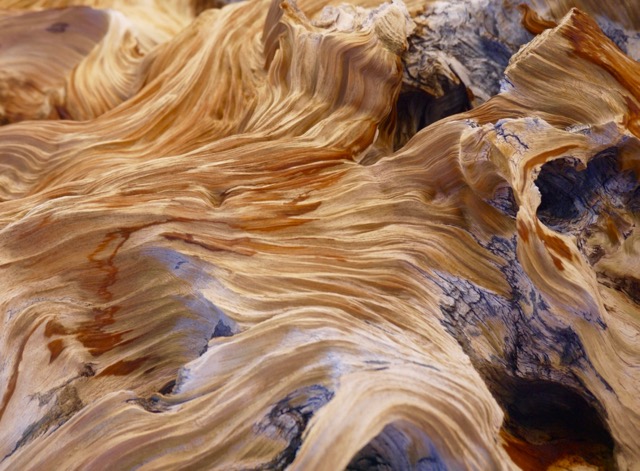
Daring to take a path towards what may be unknowable can be among the most noble pursuits of the human spirit. Known targets bring tangible opportunities for achievement, but also limitations; even a well-aimed arrow is forced to halt its arc, having reached a bullseye. Allow the arrow to be what it is, a tool for a particular purpose, but after your fingers release the bowstring do not let the confines of the arc define you. It was what you did, but only a small piece of who you are.
Without narrowing the focus on the bullseye, there can be so much to see, much that will be missed if our sights are too confined. You do not have to reduce all of this to a single place; there is room in your consciousness for all of it, if you allow it in.
This is an article I wrote back in 1999, so the references are a bit dated. I feel it is still a useful review of the literature up until then.
To most ecopsychologists, the existence of a human-nature disconnection in most modern individuals and in modern culture as a whole may be self-evident: In industrial societies, most people live indoors and most interactions take place either with other people or with huma n-made artifacts. Most people spend more time watching television than being outdoors. More people go to theme parks than go to national parks. Many ecopsychologists claim that this physical separation from the natural world leads to a psychological disconnection, that the physical separation arises from the psychological alienation, or both.
For ecopsychologists, the psychological or spiritual disconnection from more-than-human nature can lead to:
- ecologically destructive behaviour. Separation from nature on a cultural level is seen as a root cause of the ecological crisis.
- various forms of individual human suffering. Some addiction, anxiety, depression, and anger are seen as reactions to the disconnection from nature.
- various forms of social and collective suffering. Racism, sexism, violence, and alienation from society are seen as arising along with the disconnection from nature.
There is an alternative view within ecopsychology:
According to media reports, 2016 was the 25th anniversary of the birth of the Internet, although a case can be made for birthdates as early as 1989. Email discussion lists were one of the early uses of the Internet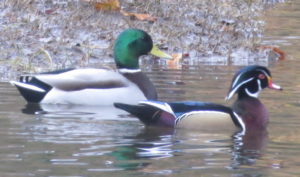 , and the second half of the 1990s saw the creation of a large ecopsychology group moderated by the late Claudia Robinson. A number of participants discovered that her moderation was somewhat immoderate and left her list to create a new, smaller, but more inclusive ecopsychology discussion list. Several members of the list attended the “For the Love of Nature” conference in Scotland, co-organized by a member of that small list, Brendan Hill of the Centre for Human Ecology.
, and the second half of the 1990s saw the creation of a large ecopsychology group moderated by the late Claudia Robinson. A number of participants discovered that her moderation was somewhat immoderate and left her list to create a new, smaller, but more inclusive ecopsychology discussion list. Several members of the list attended the “For the Love of Nature” conference in Scotland, co-organized by a member of that small list, Brendan Hill of the Centre for Human Ecology.
The list had a diverse membership from around the (mostly English-speaking) world with members in the US, Canada, the UK, Australia, New Zealand, South Africa, Belgium, and France. There was a consensus on the list that there was a need for enhanced communication beyond our small email list and occasional conferences. We had an extended discussion of our next step: Should we create an academic association with a peer-reviewed journal or should we have a very loose organization with a website and a more open magazine format? Informality and the magazine carried the day.
We called ourselves the International Community for Ecopsychology (ICE) and created the first versions of this website www.ecopsychology.org and our internet magazine Gatherings. All the work was performed by volunteers and all expenses (registration and hosting fees) were covered by donations from the members of ICE. By consensus we agreed not to carry commercial advertisements, charge for directory listings, or sell anything.
The first edition of Gatherings appeared in late 1999. The internet was still in its childhood and information was difficult to find. Google had only been online for a year and Wikipedia was still two years in the future. The response to our effort was large and positive and there was no question that we were filling an important need: Our directory soon had more than 100 listings from 25 different countries and our articles were being widely cited.
But as the Internet reaches 25 and ICE approaches 17, times are changing. The field of ecopsychology now has academic journals, there are several national and international organizations, numerous web sites, and active discussions on Facebook and probably elsewhere. As the ecopsychology community has changed, so has our ecology: Climate change and other global issues have made environmentalism and environmental issues much more prominent and critical than they were, while ecotherapy and nature healing have become almost mainstream.
What is the continuing role for www.ecopsychology.org? Where do we go from here? It would be great to read comments from our readers, supporters, current and former members, and maybe even future members of ICE.
We are in Wells Gray Park, a huge protected natural area in the Caribou Mountains of British Columbia, Canada. It is a land of mountains, lakes, rivers, and forests with a diversity of wildlife, notably bears, moose, birds, fish, and more than 30 species of mosquito.
More than anything else, though, Wells Gray is a land of waterfalls. Due to its unique geological history, there are about 39 named major waterfalls and uncounted smaller cascades in the park. Helmcken Falls is the 4th largest waterfall in Canada, about three times the height of Niagara Falls.
Much can be learned in the company of waterfalls. Watching a river’s wild cascade, breathing the mist, and experiencing the roar, it is clear that a waterfall is a living being. The word “waterfall” tells of relationships. A waterfall is the event when a particular river arrives in a particular location. It is the immensely powerful and beautiful shape water takes for a moment in its journey down a stream.
If we stretch the time scale, we realize that everything (and everybody) is a temporary event like a waterfall. Just as a waterfall is a momentary shape of water, a tree is the shape takon by sunlight, water, and certain chemicals for a few centuries. Animals, including humans like myself, are the shape food, water, and air takes for less than a century. The waterfall is the story of life written in an instant.
A striking feature of many waterfalls is that the water above the cascade is deceptively smooth, quiet, and calm, giving little warning about the confusion and danger ahead. From the quiet of a lake the current accelerates imperceptibly until suddenly the water rushes over the fall in a paroxysm of energy, chaos, violence, and beauty.
The same may be true of human affairs. As we age, life can go smoothly until we become ill or reach old age and our systems begin to fail at an increasing rate. For society, it seems the pace of technological and social change is gradually and smoothly accelerating, like the river above the falls.. Suddenly, a threshold may be reached and chaos ensue. The swimmers ahead of us may already be in the maelstrom while for those of us farther behind, everything may still seem safe and calm. Listening with an alert mind, we may hear the sound as we approach a fall before it is too late to swim to the safety of the bank.
There are always lessons in nature.
Two media communications coming out of the first part of 2016 are making my heart sing!
The most recent was Leonardo DiCaprio’s Oscars “Best Actor” acceptance speech for his role in The Revenant. In it he spoke out forcefully about the critical threat of Climate Change, giving specifics about the collective response he sees needed to address it and a special shout out for First Nations peoples whose “voices have been drown out by the politics of greed”. It brought a smile to this man’s face as well:
The other was Al Gore’s latest TED Talk on the Case for Optimism on Climate Change, where he talks first about the continuing seriousness and ongoing effects of climate change, and then moves on to share some of the changes we ARE making and how those changes are impacting what is now possible, and what our future can hold. A hugely inspiring talk from this courageous and visionary Nobel Laureate:
Subscribe to Seeds
Authors
Michaela J Cohen (bio)
Robert Greenway (bio)
Harriet Greenwood (bio)
Martin Jordan (bio)
Amy Lenzo (bio)
Lisa Lipsett (bio)
Heather Luna (bio)
John Scull (bio)
Robert Worcester (bio)
Tag Cloud
Current Archives
Old “Seeds for Thought” Blog
Copyright © 2025 All Rights Reserved
Customized by Clear Light Communications
